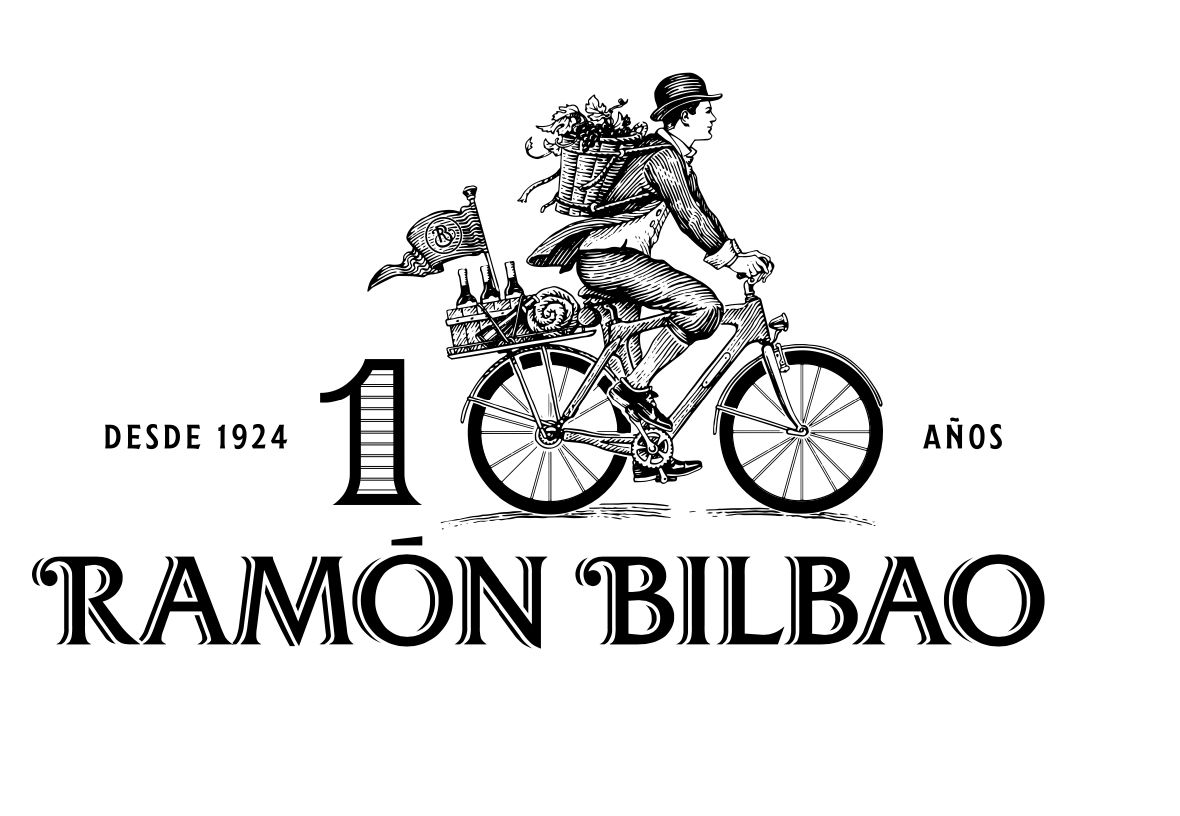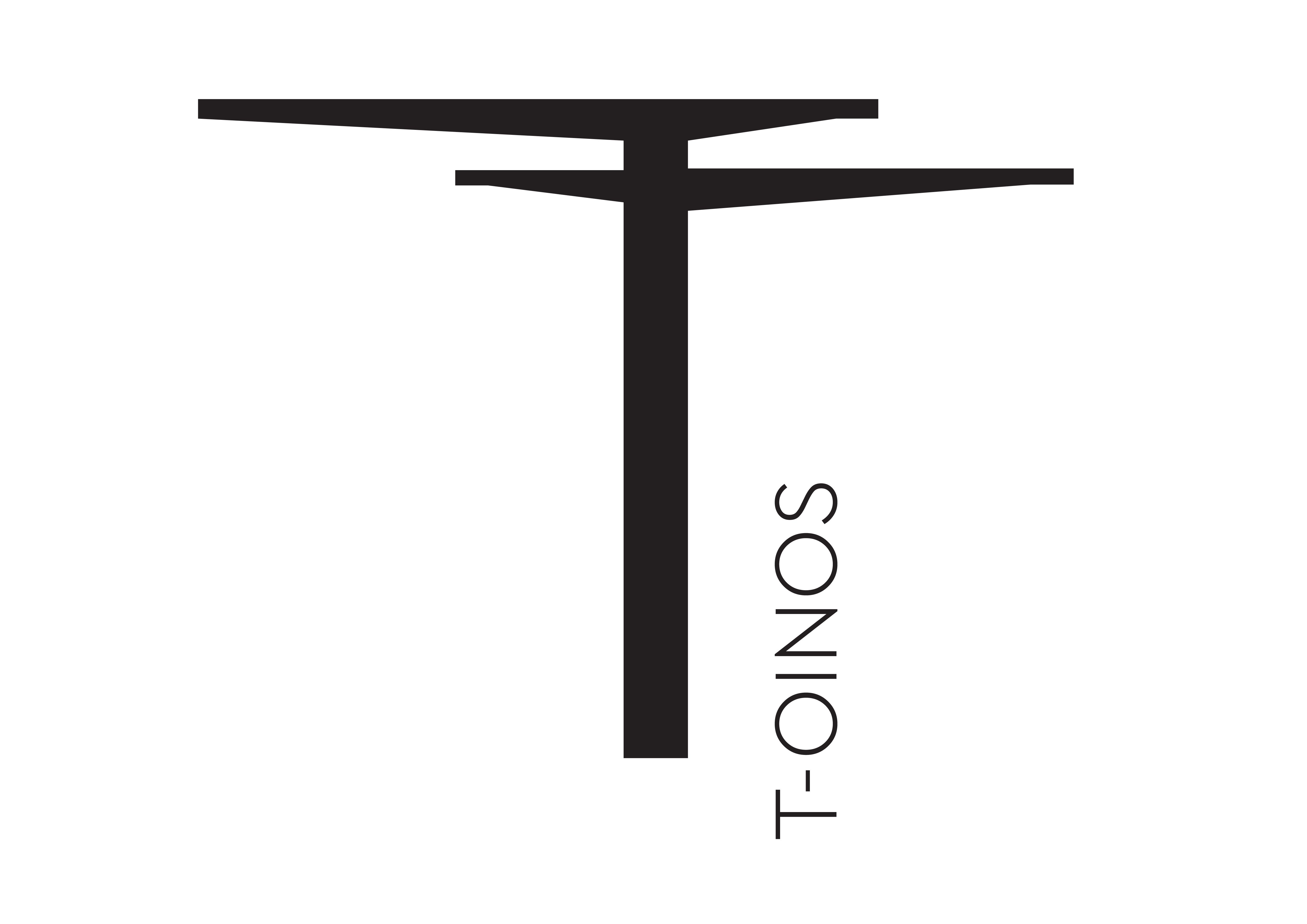New Taste Champagne event looks to bring an Australian vibe to its first European show in London on June 12.
Ever since the Champagne Bureau decided in 2017 not to hold its annual, traditional trade tasting there has been a gaping hole for someone to step in and offer an alternative. So hat’s off to Australia’s Tyson Stelzer and Jody Rolfe for not only giving it a go, but arriving in London with a ready made success.
Taste Champagne might be new to the UK wine industry, but it has already firmly established as one of the set piece annual tastings in Australia and Hong Kong.
It’s clearly been received with open arms by Champagne itself. The London tasting on June 12 will have 47 Champagne houses involved, showing 211 cuvées, and featuring 31 négociant houses, nine growers and six coopératives, covering 22 villages across the Marne, Aube and Sézanne.
Where Taste Champagne hopes it can make a difference is by giving the space and shining the spotlight on what you might call Champagne’s underperforming categories.
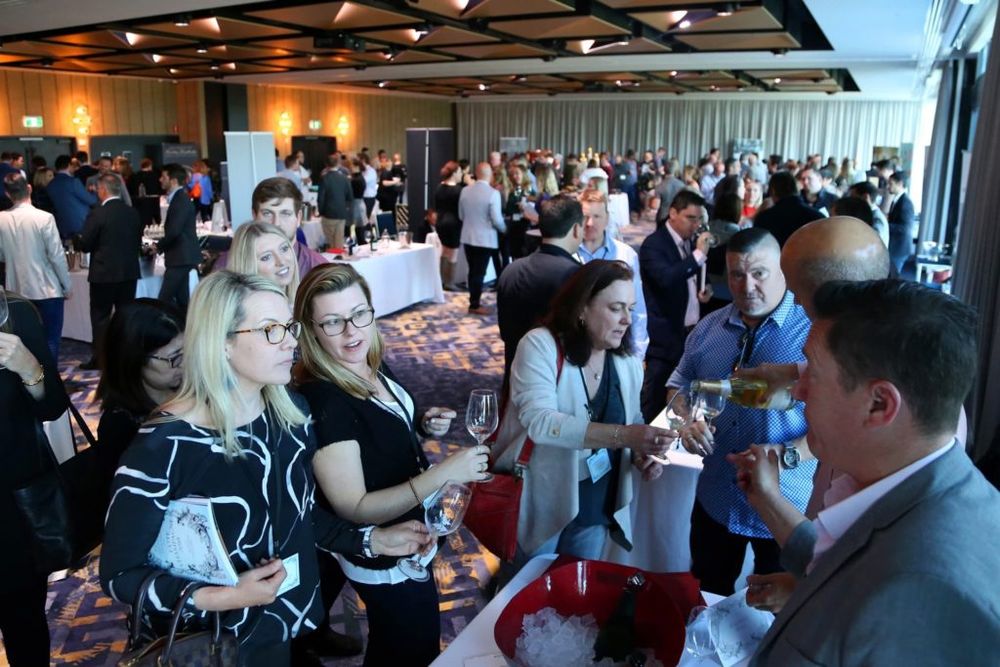
Taste Champagne has been running a series of events across Australia for the last six years like here in Perth
Now these events don’t just come out of thin air. Particularly for Champagne. To be a success you need to come to the table with some pedigree and credibility. Which is where Tyson Stelzer comes in. For when it comes to Champagne he knows what he is talking about.
In 2011 he was named International Champagne Writer of the Year, which he followed up in 2015 when he became the International Wine & Spirit Communicator of the Year and has also been awarded the Australian Wine Communicator of the Year in 2015 and 2013.
Here he explains what Taste Champagne is all about and what buyers can expect when they head to Spitafields on June 12.
Tell us about Taste Champagne. How did it come about?
I created Taste Champagne five years ago as the ultimate forum to showcase the grand diversity of champagne, the only event in Australia where négociant houses, growers and cooperatives can stand together and pour their cuvées freely for the wine trade, media and champagne-loving public.
I’ve been honoured to grow this event series into the biggest Champagne showcase in the New World, spanning six states of Australia and Hong Kong – and now London for the first time.
Now that the Champagne Bureau is no longer hosting its trade and media tastings in the UK, Champagne deserves a dedicated annual showcase, exclusive to Champagne only. As the ultimate chance to taste and compare the full expanse of the diversity of champagne, Taste Champagne offers trade, media and public guests an annual opportunity to write their champagne buying lists for the year.
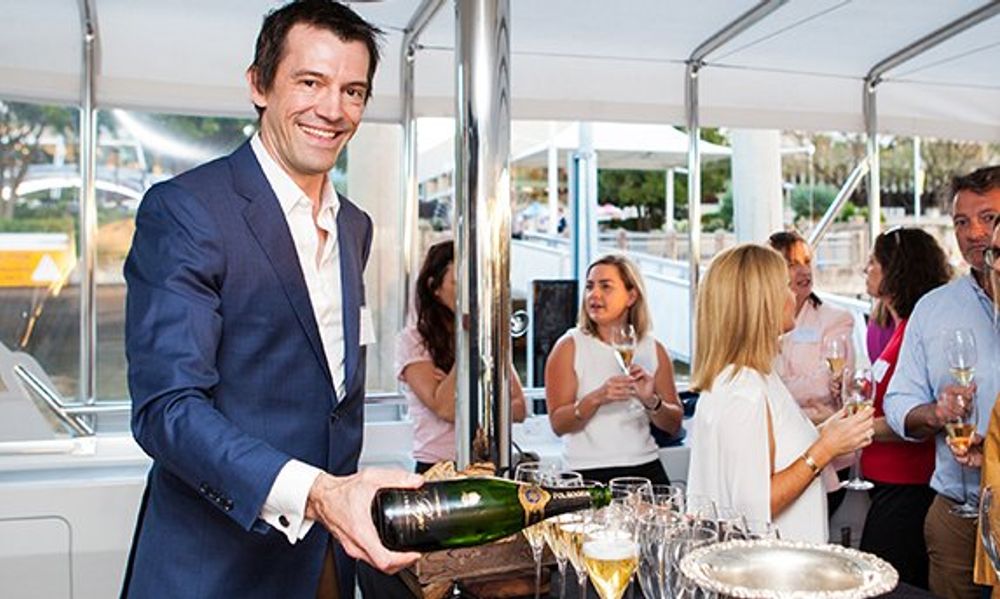
Tyson Seltzer has built a reputation as a Champagne expert and critic
At a time when the market is becoming increasingly fragmented and factions of support for growers and houses are splintering off in the market, Champagne is strongest in its unity, and this is the mandate of Taste Champagne.
Taste Champagne London is run by me and my events manager, Jody Rolfe, who shares my love of Champagne!
It’s your first show in the UK but this is the sixth year of Taste Champagne as an event. How did the idea come about?
The UK is Champagne’s biggest and most important export market, and I’ve long been in conversation with Champagne houses and their UK agents, actively listening to the unique needs of this dynamic market at this delicate time in its economy. Witnessing the way Taste Champagne has united négociant houses, growers and cooperatives with the wine trade, media and public across Australia and Hong Kong, now is the right time to unite the Champagne trade in the UK.
It is quite a challenge putting on such an important trade tasting for such key part of the world. Why were you so keen to do one for Champagne?
London is blessed with Champagne showcase events, but lacks this year a large-scale event devoted exclusively to Champagne, that equally embraces the largest houses and the smallest growers, accessible to wine trade, media and the general public. Taste Champagne offers an experience to meet this need.
We’ve had an amazing response from the Champagne houses and their UK agents, and we are thrilled to have the support of 46 houses on board for our inaugural event.
You have made your name hosting Taste Champagne events in Australia and Asia. Tell us how that has developed and where you are now?
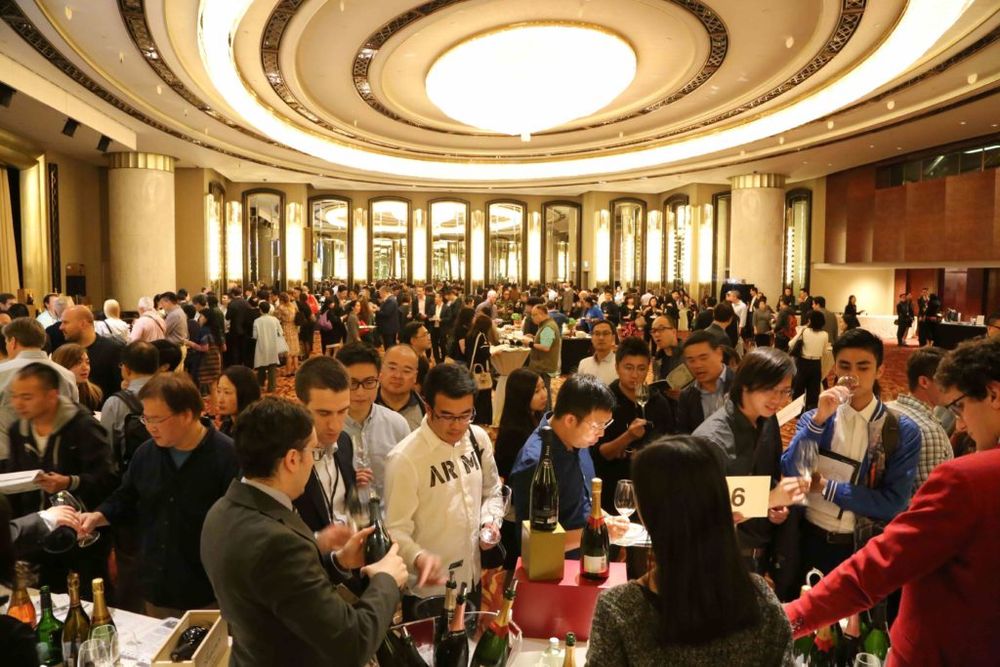
Taste Champagne has now expanded to Hong Kong
I love sharing the stories of Champagne and getting under the surface of this complex place to introduce the people, explain the places and unravel the processes.
This has been the inspiration for six editions of The Champagne Guide, numerous articles across magazines worldwide, intimate tours to take groups behind the scenes of champagne’s most celebrated houses, and countless masterclasses and dinners around the world. Taste Champagne takes this all to a new level by bringing a large-scale event to the epicentres of the leading champagne markets across the globe, creating a forum in which each agent and house representative has the opportunity not only to pour all of their cuvées, but also to personally introduce them by recounting the stories of what makes them special and unique.
You are also committed to running it as a roadshow in Australia rather than a single event – why is that?
Australia is one of the most complex Champagne markets, challenged not least by the geographical spread of this vast continent. Very few importers have the resources to service even the majority of major capital cities. Taste Champagne is Australia’s very first truly national champagne showcase, with events across six states each subtly different, to present the houses most important to that city and state.
What is the Champagne market like in Australia?
Australia is like no other Champagne market on earth. Posting almost ten-fold growth since 2001, no other country has embraced Champagne so affectionately, so fast. And yet Australia is a notoriously challenging market for Champagne: highly price sensitive, overwhelmingly big brand driven, and dominated by the supermarket duopoly. The giant négociant houses rule in Australia, and growers and coopératives occupy but a miniscule presence. Among Champagne’s top 10 markets, Australia ranks stone cold last or second last in number of négociant houses, growers and cooperatives, volume of growers and cooperatives, average spend per bottle, and volume of rosé. The only other market quite like it is the UK. But it’s not as simple as first appearances might suggest, and Australia’s champagne consumption today is more effervescent than ever before.
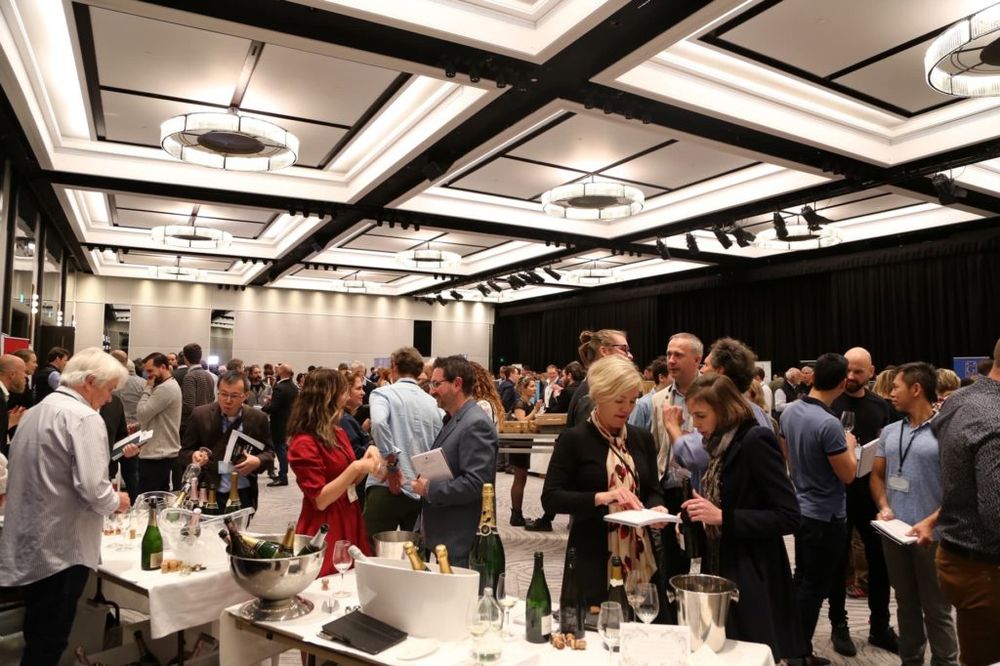
Another crowd, another city. Taste Champagne in Sydney
How open has the Champagne industry been to Taste Champagne and supporting it?
There is no greater endorsement than the weight of support of the houses in continuing to showcase their cuvées at Taste Champagne. Over the past five years, Taste Champagne has been privileged to showcase 165 different champagne houses across 46 events in eight cities.
The events have been named the “best tasting of the year” by top sommeliers and wine buyers, “the greatest champagne show on the planet” by exhibiting agents and “an extraordinary experience” by the public. One grower declared, “Nowhere in France can anyone go to taste so many champagnes in one night.”
So why are you coming to London for the first time?
Some might say we are completely mad to launch the inaugural Taste Champagne London in the midst of Brexit – the ‘looming end of the world’, as one British Champagne importer recently put it. Taste Champagne is here to proudly and unashamedly champion the homeland of Britain’s favourite fizz, not in spite of the turmoil of Brexit but because of it. We are honoured to unite with 46 of the greatest names of Champagne, from the smallest growers to the largest houses, in a bold statement of solidarity; that regardless of political boundaries, Champagne is open for business and stands resolutely alongside its great friends in the UK.
The long and deep history of Champagne in the UK has not been without its political ups and downs. And yet it remains that Champagne owes more to Britain over five centuries than it does to any other export market. Champagne’s very existence was hinged on this relationship, and its future will remain inextricably entwined with its longest standing effervescent ally. It is this relationship that Taste Champagne stands to champion and foster.
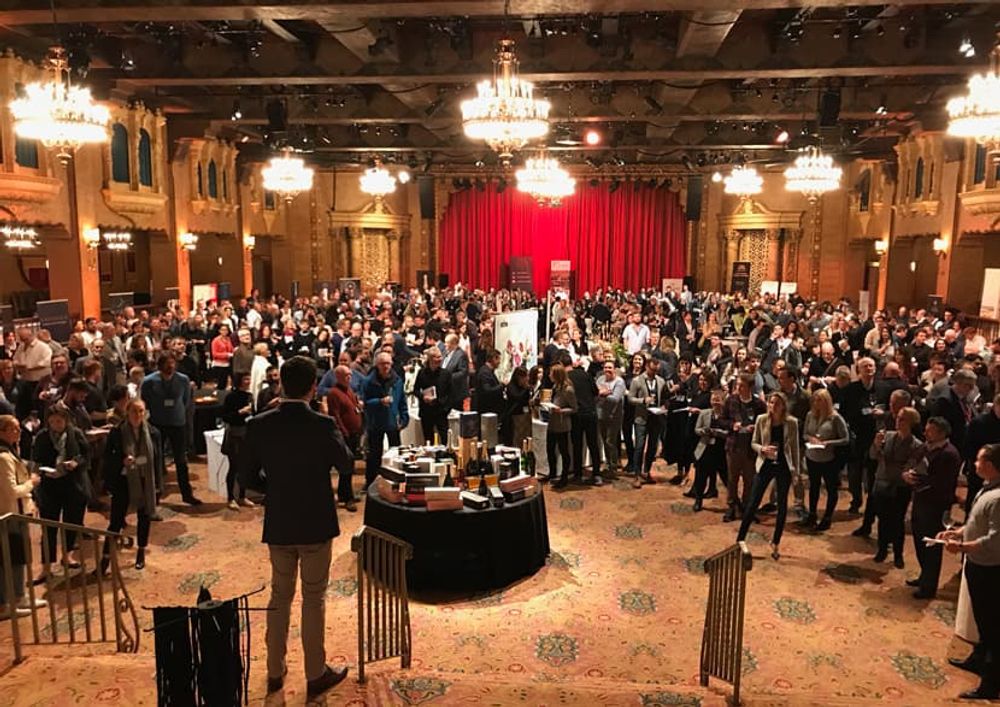
Tyzon Seltzer welcoming everyone to Taste Champagne In Melbourne
Who do you want to attend and why?
The Taste Champagne London trade and media tasting is reserved exclusively for wine media, retail wine buyers and sommeliers. The Taste Champagne Public Tasting is open to the general public. This is not a snobby tasting reserved for aficionados, it is an open and inviting experience that welcomes everyone with a desire to learn more about champagne.
What can they expect in terms of number of producers and what is going to be shown?
As a fully independent wine communicator and author of five editions of The Champagne Guide, with no allegiances to any brands or association with wine retail, I have created Taste Champagne to equally embrace and champion Champagne négociants, growers and cooperatives, from the smallest to the very largest. I am proud to offer every house the opportunity to pour every cuvée, with no limit or restriction.
The inaugural Taste Champagne London is proud to showcase 211 cuvées from 46 champagne houses, including 31 négociant houses, nine growers and six coopératives, hailing from 22 villages across the Marne, Aube and Sézanne.
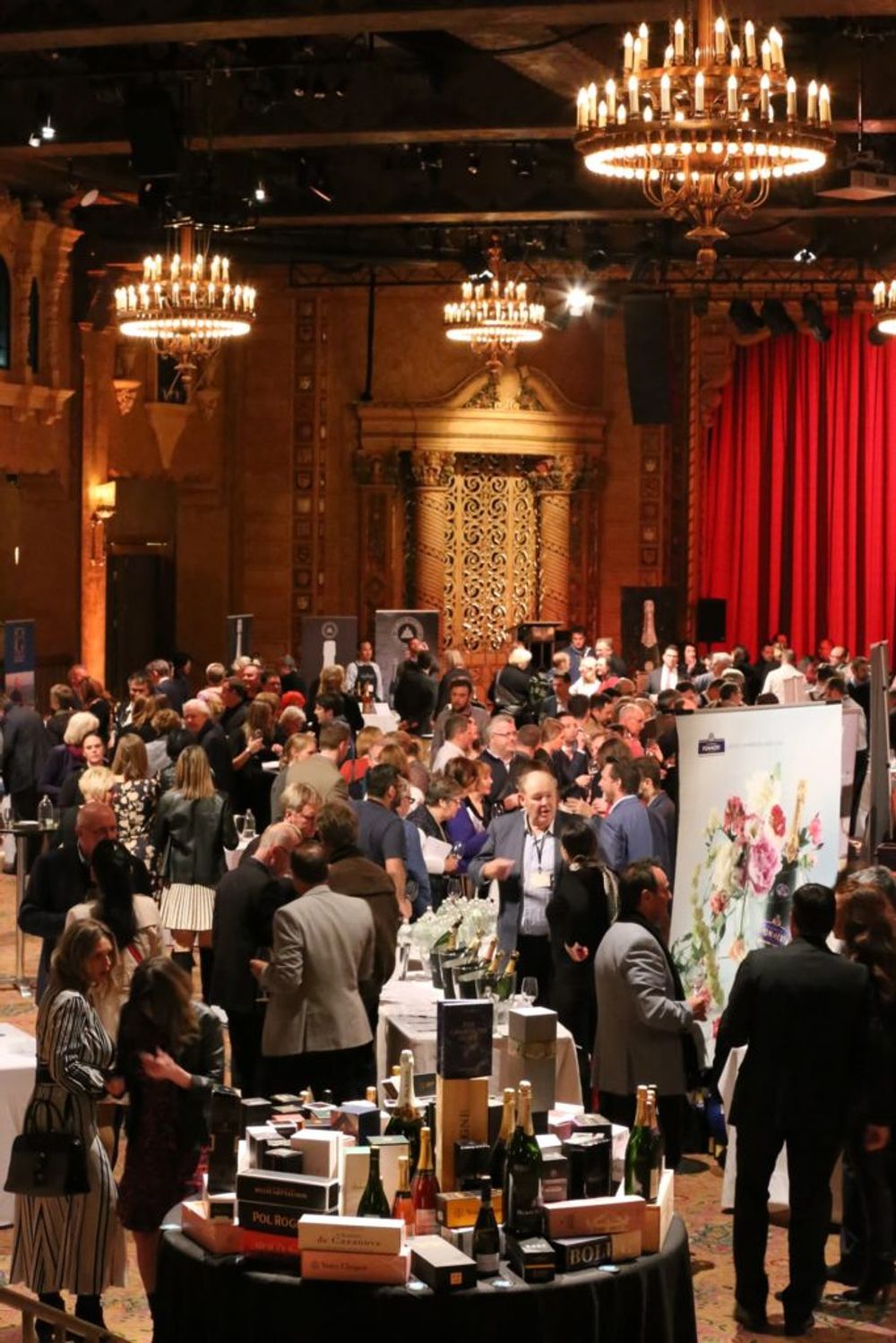
Taste Champagne is devoted exclusively to championing Champagne in its full and glorious diversity, and this year we are delighted to highlight an impressive 50 vintage cuvées, 36 rosés and 22 prestige. These crucial underperforming categories possess tremendous potential for growth in the UK and represent a key focus for this event.
Will you be having masterclasses?
Taste Champagne has featured masterclasses at some of its events in the past, and we are planning to introduce masterclasses next year at our second Taste Champagne London, scheduled for the end of March or early April 2020.
How do you seen the Champagne market in the UK?
Champagne in the UK hit a dismal seventeen year low in 2018, with imports dropping to their lowest point since 2001, following a decline triggered by the GFC and exacerbated since the announcement of Brexit. Among Champagne’s top 10 markets, the UK ranked last for grower Champagnes, and among the lowest in average spend per bottle, in diversity of brands and in affection for prestige and vintage. So dramatic has been the UK Champagne crash – plunging more than 30% in volume since the GFC in 2007 – that the country looks set to relinquish its mantle as Champagne’s biggest export market as soon as next year. The US is hot on its heels, and rising fast.
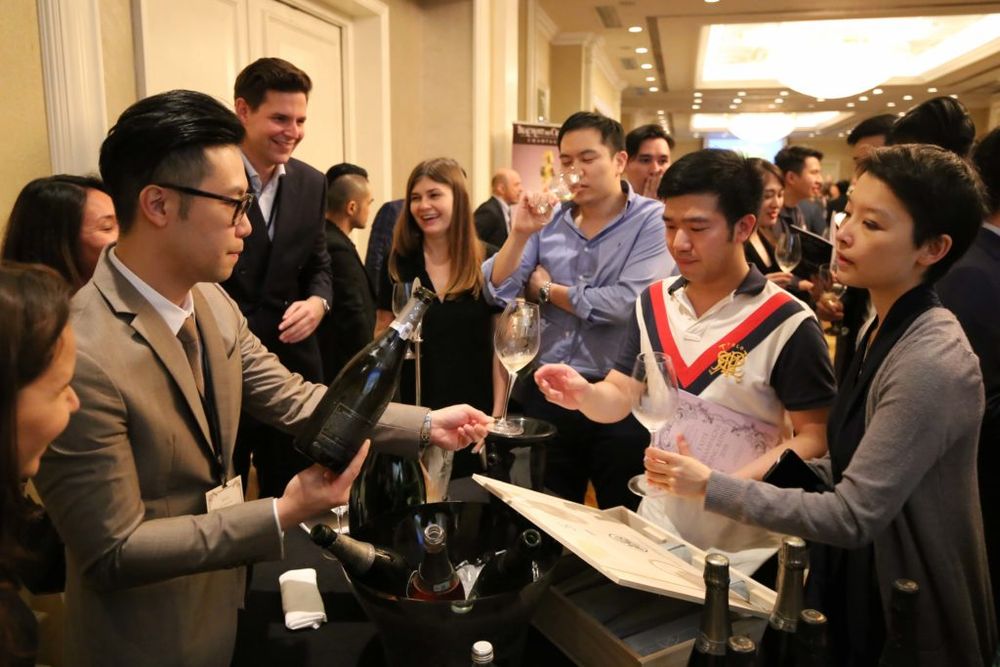
Taste Champagne is looking to hold other events in New York and potentially Tokyo
2019 represents a dramatic watershed year for Champagne in the UK. The Director General of the Comité Champagne suggested that this is the beginning of a new period for Champagne globally.
However, a closer look reveals that there is encouragement to be read into the trends, and Champagne in the UK is far from losing its bubble. In spite of collapsing volumes, the value per bottle is on the rise. The British uphold their title of consuming more Champagne per person than any country outside continental Europe, coopérative imports are at a five year high, rosé sales remain buoyant, and Champagne lovers are now privileged to a greater diversity of houses than any time in history. And, ultimately, even after a decade of decline, the UK still remains Champagne’s largest export market.
Are you looking to take Taste Champagne to other cities and countries around the world…when and where?
Plans are in motion to take Taste Champagne to New York in 2020. And Tokyo is also on the Taste Champagne radar!
What do you see as being the key trends for Champagne in terms of styles / price points?
Export markets were where Champagne’s diversity shone again in 2018, eclipsing its record 2017 export values for rosés, prestige, demi-sec, extra brut and brut nature. Rosé in particular continued its spectacular trajectory, now representing 10% of volume and 11.8% of value of exports.
Meanwhile, we have seen an increasing global shift in the balance of Champagne. Over the past decade, global sales by volume by Champagne négociant houses have grown 13.3% and coopératives by 10.8%, while growers have dropped by a devastating 26.7% as Champagne moves toward a steadily increasing dominance by its négociant houses. 2018 saw grower sales decline by 4.4% to just 18.2% of Champagne sales. The long-term trend is even more troubling, as just a decade ago in 2008, growers sold 78.5 million bottles, almost one-quarter of all Champagne sales.




























